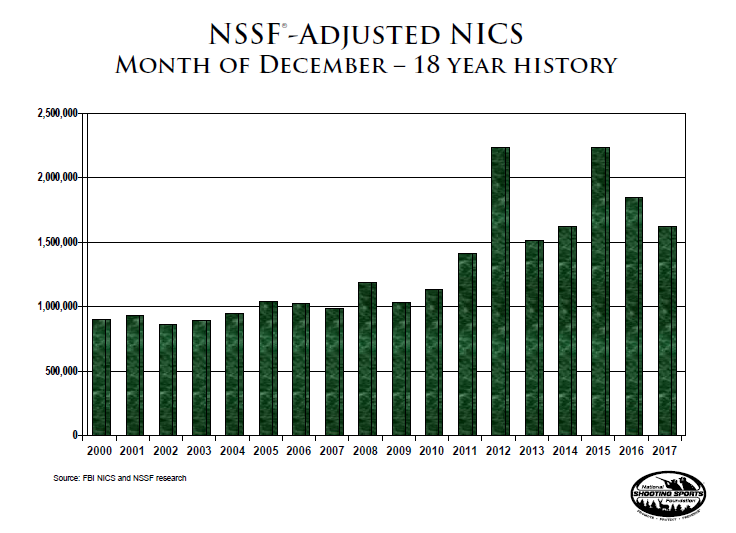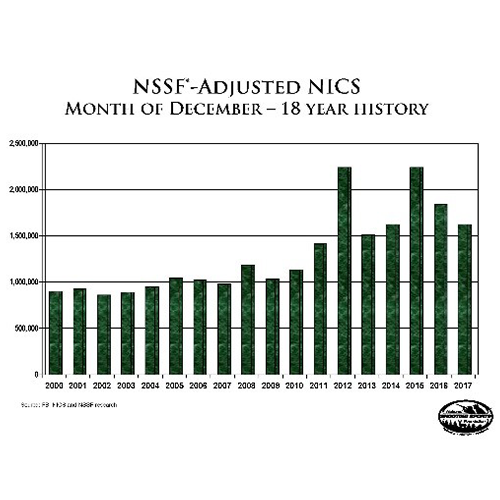The attorneys for five individual plaintiffs and four institutional plaintiffs (SAF, Calguns, Firearms Policy Coalition, and Firearms Policy Foundation) filed for an injunction today in the case of Holt et al v. Becerra. The case is filed in California Superior Court for Riverside County. The filings today also added another individual plaintiff – Craig Stevens. SFC Stevens is an active duty member of the California Army National Guard and is currently deployed to the Middle East.
RIVERSIDE, CA (January 3, 2018) — Attorneys for 5 California gun owners and 4 civil rights advocacy organizations have filed for an injunction against the state’s Department of Justice regulations on so-called “assault weapons.”
In the request for an injunction, the plaintiffs argue that “they, and many others similarly situated, will suffer irreparable injury if they are forced to comply with the registration requirement in accordance with the Challenged Regulations by the statutory deadline of June 30, 2018. In essence, they and many others would either be illegally forced to register or illegally denied the ability to register their firearms.”
Also filed was an amendment to the case, adding Craig Stevens as an individual plaintiff suing over the regulations. According to the filing, Stevens is “currently an active-duty member of the California Army National Guard, having the rank of Sergeant First Class (SFC), and is currently and as of December 23, 2017, deployed overseas to the Middle East.”
Stevens has tried multiple times to comply with the DOJ regulations on “assault weapons,” but the DOJ rejected his application even though there was no legal basis for them to deny him the registration of his firearm. “The declaratory and injunctive relief, and/or mandamus relief, sought in this action are necessary as set forth herein, to vindicate his right (and obligation), and the rights (and obligations) of others similarly situated, to register this legally-owned firearm as the only available means by which to maintain lawful possession of such firearms according to the DOJ’s regulatory scheme,” the court filing says.
About the new filings, plaintiffs’ attorney George M. Lee explained, “As we show in our motion for an injunction, the State’s regulatory and enforcement scheme was designed and functions to separate law-abiding people from their rights, property, and statutory obligations. We seek in this case to make DOJ follow the same laws they impose on others – and protect law-abiding gun owners in the process.”
Raymond DiGuiseppe, co-counsel and former California deputy attorney general, agreed. “The Department of Justice has grossly exceeded their authority and is illegally imposing its will on thousands of California gun owners. Their regulations and actions undermine the rule of law and put potentially hundreds of thousands of people at risk for serious criminal liability. We look forward to resolving these issues as quickly as possible and protecting California’s law-abiding gun owners from this regulatory overreach.”
Named as defendants are California Attorney General Xavier Becerra, Chief of the DOJ Bureau of Firearms Stephen Lindley, the California Department of Justice itself, Director of the Office of Administrative Law (OAL) Debra Cornez, and State Controller Betty Yee.
The lawsuit is backed by The Calguns Foundation (CGF), Second Amendment Foundation (SAF), Firearms Policy Coalition (FPC), and Firearms Policy Foundation (FPF).
A copy of the complaint and petition for writ of mandate can be viewed or downloaded at http://bit.ly/holt-v-becerra.
CASE BACKGROUND:
In July 2016, California Governor Jerry Brown signed a number of new gun control bills into law, including two (SB 880, Hall; AB 1135, Levine) expanding the State’s ban on so-called “assault weapons.” The bills were universally opposed by civil rights advocacy groups including Firearms Policy Coalition, Gun Owners of California, the National Rifle Association, California Rifle & Pistol Association, National Shooting Sports Foundation, and others.
“The Legislature ignored every rule in the book to fast-track their civilian disarmament agenda and herd the people into a state-wide gun-free-zone,” said FPC Spokesperson Craig DeLuz in a statement at the time.
Following that, in December 2016, the California DOJ submitted its first attempt at “assault weapons” regulations under the OAL’s “File & Print” process, which means that the DOJ claimed the regulations were not subject to the public notice or comment requirements of the Administrative Procedure Act (APA).
However, the DOJ withdrew the regulations near the end of OAL review period, after receiving thousands of opposition letters from FPC members and Second Amendment supporters.
Then, in May of last year, the DOJ re-submitted regulations under the same “File & Print” process. FPC, FPF, CGF, and Craig DeLuz sued the DOJ over the Department’s actions of blocking access to the public records concerning its promulgation of these regulations. The regulations were completely rejected by OAL a little more than a month later.
Next, the DOJ submitted a virtually-identical set of regulations under the “File & Print” process, again claiming “APA-exempt” status. Inexplicably, this time the OAL approved the regulations, shuttling them along for publication through the Secretary of State in July 2017 and thus allowing the DOJ to proceed with its new “assault weapon” regulatory process.
Then, just before closing doors for the Thanksgiving 2017 holiday, the DOJ notified FPC and other Institutional Plaintiffs that it had filed yet another proposed rulemaking on “bullet-button assault weapons” (that would create new 11 CCR § 5460) for the purpose of attempting to retroactively bootstrap its prior July regulations into effect for all purposes including criminal prosecutions.
FPC published the new proposed regulations and prior regulatory updates at BulletButtonBan.com, a Web site it established in 2016 for tracking the new California assault weapon laws and regulations. Members of the public can use FPC’s Grassroots Action Tools to submit responsive written comments to DOJ regarding the new proposed regulations.
A public hearing on the new regulations is scheduled for 10 a.m. on January 8, 2018, at the Resources Building Auditorium in Sacramento.
ABOUT THE INDIVIDUAL PLAINTIFFS:
Plaintiffs George Holt, Irvin Hoff, Michael Louie, Rick Russell, and Craig Stevens are all law-abiding, tax-paying residents of California who lawfully own firearms potentially subject to the DOJ’s illegal regulatory scheme. This scheme would retroactively deem their firearms “assault weapons” that either must now be registered as such through a burdensome and wasteful registration process or that cannot be registered all, effectively rendering any continued possession unlawful. The DOJ’s regulations expose them to criminal liability that would not otherwise exist under the actual laws regulating firearms in California.
The plaintiffs have joined this lawsuit to stand against the illegal regulatory actions of the DOJ and protect their rights and the rights of countless other law-abiding California gun owners being placed in jeopardy.
ABOUT THE ORGANIZATIONS:
The Calguns Foundation (www.calgunsfoundation.org) is a 501(c)3 non-profit organization that serves its members, supporters, and the public through educational, cultural, and judicial efforts to advance Second Amendment and related civil rights.
Second Amendment Foundation (www.saf.org) is the nation’s oldest and largest tax-exempt education, research, publishing and legal action group focusing on the Constitutional right and heritage to privately own and possess firearms. Founded in 1974, The Foundation has grown to more than 650,000 members and supporters and conducts many programs designed to better inform the public about the consequences of gun control.
Firearms Policy Coalition (www.firearmspolicy.org) is a 501(c)4 grassroots nonprofit organization. FPC’s mission is to defend the Constitution of the United States, especially the fundamental, individual Second Amendment right to keep and bear arms, through advocacy, legal action, education, and outreach.
Firearms Policy Foundation (www.firearmsfoundation.org) is a 501(c)3 grassroots nonprofit organization. FPF’s mission is to defend the Constitution of the United States and the People’s rights, privileges and immunities deeply rooted in this Nation’s history and tradition, especially the inalienable, fundamental, and individual right to keep and bear arms.



